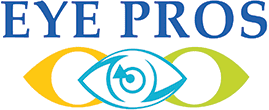The Eye Pros on Relieving Itchy Eyes at Night

If you find yourself struggling with itchy eyes at night, you’re not alone. Many people experience this uncomfortable issue, often worsened by factors like allergies, dry eyes, or prolonged screen use before bed. Itchy eyes can disrupt your sleep, leave you feeling irritated, and lead to other symptoms such as redness, tearing, and swelling. While rubbing itchy eyes might provide temporary relief, it often makes the problem worse by introducing more irritants and further aggravating the eyes. At The Eye Pros, we understand how frustrating nighttime eye irritation can be. Whether it’s due to dry air, allergens, or even poor eye hygiene, it’s essential to address the underlying cause of the itching. In this article, we’ll explore common itchy eyes causes, effective itchy eyes treatments, and when you should consult an eye doctor for more serious concerns. Whether you’re dealing with itchy eyes at night in kids or adults, understanding the triggers and remedies will help you achieve relief and better eye health. Causes of Itchy Eyes at Night Understanding the underlying itchy eyes is key to finding the right solution. While itchy eyes can happen at any time, many people experience the problem more severely at night due to various factors. Allergies Allergies are one of the most common causes of itchy eyes at night. When you’re exposed to allergens such as dust mites, pet dander, or mold while you sleep, it triggers an allergic response that leads to itchy, red, and swollen eyes. Seasonal allergies, especially during spring and fall, can also cause itchy eyes at night due to increased pollen exposure. If you’re experiencing these symptoms, it’s essential to identify and minimize exposure to allergens in your home. Dry Eyes Dry eyes are another frequent culprit of nighttime itching. The lack of adequate tear production or poor tear quality can result in dryness and irritation, especially when exposed to dry air from fans or air conditioning. This condition, known as nocturnal lagophthalmos, occurs when your eyes don’t fully close while sleeping, leading to dryness and discomfort. Applying itchy eye drops before bed can help alleviate some of the symptoms of dryness. Eye Strains from Screens Prolonged exposure to screens before bed can also lead to itchy eyes at night. Excessive screen time reduces blink rate, which dries out the eyes and causes discomfort. This can worsen when compounded by low light environments, which strain the eyes even more. Contact Lens Use Wearing contact lenses for too long or improper lens hygiene can lead to rubbing itchy eyes at night. Contact lenses trap allergens and irritants, and when worn for extended periods, they can cause inflammation and dryness. Switching to glasses before bed can help your eyes “breathe” and reduce nighttime irritation. Irritants in the Environment Environmental factors such as smoke, pollution, or even strong cleaning products can irritate your eyes, especially at night when you’re exposed to these irritants for long periods in an enclosed space. Ensuring your bedroom is free from irritants can go a long way toward reducing itchy eyes at night. By identifying the cause of your itchy eyes, you can take steps to prevent them from worsening. If you continue to experience discomfort despite making changes, it may be time to consult an eye doctor for a proper diagnosis and targeted itchy eyes treatment. Home Remedies and Treatment Options Addressing itchy eyes at night often requires a combination of home remedies and professional treatments. By identifying the root cause and applying the right remedies, you can find relief from the discomfort and get back to restful sleep. Below are some effective ways to manage itchy eyes: Use Artificial Tears One of the simplest and most effective remedies is using itchy eyes drops, specifically artificial tears. These eye drops help lubricate the eyes, reducing dryness and irritation, especially if dry eyes are causing the itching. Opt for preservative-free versions, as they are gentler on the eyes and can be used more frequently without irritation. Warm and Cool Compress For those suffering from conditions like blepharitis (inflammation of the eyelids) or dry eyes, alternating between warm and cool compress can provide immediate relief. A warm compress helps to loosen debris and oil buildup in the eyelids, while a cool compress can reduce inflammation and soothe itchy eyes. Humidifiers If dry air is a contributing factor, especially during the colder months or in air-conditioned rooms, using a humidifier in your bedroom can prevent your eyes from drying out overnight. Moist air can help keep your eyes hydrated, minimizing discomfort. Allergen Management Allergies are a leading cause of itchy eyes at night, and managing allergens in your sleeping environment is crucial. Consider the following tips: Use allergen-proof pillows and bedding. Keep pets out of the bedroom, especially if you’re allergic to pet dander. Vacuum and dust regularly to reduce dust mites and other irritants. Proper Contact Lens Care For contact lens wearers, practicing good hygiene is essential to avoid irritation. Ensure that you’re cleaning your lenses as directed and switching to glasses in the evening to give your eyes a break. Poor contact lens hygiene can lead to eye infections or exacerbate itchy eyes. Avoid Rubbing Your Eyes While rubbing itchy eyes might seem like a quick fix, it often worsens the problem by introducing more irritants and potentially causing damage to the eye’s delicate tissues. Instead, blink more frequently to naturally lubricate your eyes or apply lubricating eye drops to relieve the itch. If these remedies don’t offer enough relief, it’s best to seek professional help from an eye doctor. They can provide more tailored itchy eyes treatment options based on your specific symptoms and the underlying cause. When to See an Eye Doctor While home remedies and self-care can offer relief for many cases of itchy eyes at night, there are times when professional care from an eye doctor is essential. If your symptoms persist or worsen, it may indicate a more serious underlying issue that requires medical attention. Here are some signs that
How to Prevent Eye Infections: Tips for Healthy Eyes

Your eyes are one of the most sensitive parts of your body, and keeping them healthy should be a priority. One of the most common threats to eye health is infections, which can cause discomfort, irritation, and, in severe cases, vision loss. The good news is that many eye infections are preventable with the right habits and care. From practicing proper hygiene to using contact lenses correctly, there are several ways to protect your eyes from harmful bacteria and viruses. Regular check-ups with an eye doctor are also essential in catching infections early and ensuring your eyes remain healthy. In this guide, we’ll explore the key causes of eye infections and provide practical tips to prevent them, so you can enjoy clear, healthy vision for the long term. Common Causes of Eye Infection Eye infections can develop from various sources, including bacteria, viruses, and fungi. Understanding these causes can help you take the necessary precautions to prevent infections and maintain healthy eyes. Here are some of the most common causes of eye infections: Bacteria Bacterial infections, such as those caused by Staphylococcus, are a frequent source of eye infections. These bacteria can enter the eyes through dirty hands, contaminated contact lenses, or shared eye makeup. Viruses Viral infections, like conjunctivitis (pink eye), are highly contagious and often spread through direct contact with infected individuals or surfaces. Viral eye infections can cause redness, swelling, and watery discharge. Fungi Fungal infections, although rare, can occur through exposure to contaminated water or eye products. These infections can lead to serious complications if left untreated. Allergies and Irritants While not infectious, exposure to allergens and irritants can weaken your eyes’ defenses, making them more susceptible to infections. By being aware of these potential causes, you can take proactive steps to protect your eyes from harmful substances. If you notice any symptoms of infection, it’s important to consult an eye doctor for a thorough evaluation. Essential Tips to Prevent Eye Infections Preventing eye infections begins with good hygiene and proper care for your eyes and any products that come in contact with them. By incorporating these habits into your daily routine, you can significantly reduce the risk of infections and ensure your eyes remain healthy. Here are some essential tips for preventing eye infections: Wash Your Hands Regularly One of the simplest and most effective ways to prevent eye infections is to always wash your hands before touching your eyes or handling contact lenses. This helps to remove harmful bacteria and viruses that can cause infections. Practice Proper Contact Lens Care If you wear contact lenses, it’s crucial to clean and store them correctly. Use the recommended solution, never reuse old solution, and avoid sleeping or swimming with lenses in, as this can introduce bacteria into your eyes. Use Clean Towels and Bedding Towels and pillowcases can harbor bacteria that may come in contact with your eyes. Make sure to wash these items regularly to reduce contamination and protect your eye health. Avoid Touching Your Eyes Touching or rubbing your eyes can transfer germs from your hands to your eyes, increasing the risk of infection. If you must touch your eyes, ensure your hands are clean, or use a tissue. Don’t Share Eye Makeup or Eye Products Sharing eye products like mascara, eyeliner, or even eye drops can easily spread bacteria and viruses. Keep your products personal and replace them regularly to avoid infections. Wear Protective Eyewear When working in dusty or hazardous environments, or even during sports activities, wearing protective eyewear can help prevent debris and harmful particles from entering your eyes and causing irritation or infection. By following these simple steps, you can prevent most common eye infections and keep your eyes healthy. Remember, if you experience any persistent symptoms such as redness, swelling, or discharge, visiting an eye doctor for professional care is essential. When to See an Eye Doctor Even with the best prevention habits, eye infections can still occur. It’s essential to recognize the symptoms and know when to consult an eye doctor for professional care. Early intervention can prevent infections from worsening and help you recover quickly. Here are common signs that it’s time to see an eye doctor: Persistent Redness If your eyes remain red and irritated for more than a couple of days, it could be a sign of a bacterial or viral infection that requires medical attention. Swelling or Discharge Swelling around the eyes or unusual discharge (such as thick, yellow or green fluid) is a clear indication of infection. This may require prescription eye drops or antibiotics from your eye doctor. Pain or Sensitivity to Light If you experience sharp pain in the eyes, coupled with sensitivity to light, this could be a more serious infection that needs immediate medical care. Blurred Vision Any changes in vision, such as blurred vision, could indicate that the infection is affecting your ability to see clearly. Don’t delay in scheduling an appointment with an eye doctor to address the issue. Eyes Doesn’t Improve with Basic Care If your symptoms aren’t improving with over-the-counter treatments like eye drops or warm compresses, it’s important to seek professional help. Your eye doctor can diagnose the type of infection you’re dealing with and prescribe the right course of treatment, whether it’s antibiotic eye drops or other medication. Regular eye exams are also key in preventing infections, as your eye doctor can catch any early signs of irritation or bacteria buildup before they become more serious. FAQs How do you treat an eye infection? Treating an eye infection depends on the type of infection. Bacterial infections are typically treated with prescription antibiotic eye drops or ointments, while viral infections, like conjunctivitis, may resolve on their own but can be managed with lubricating eye drops. It’s important to visit an eye doctor for the right diagnosis and treatment. How do you tell if an eye is infected? Common signs of an eye infection include persistent redness, swelling, discharge, itchiness, and blurred vision. If
5 Eye Conditions to Watch Out for After 40
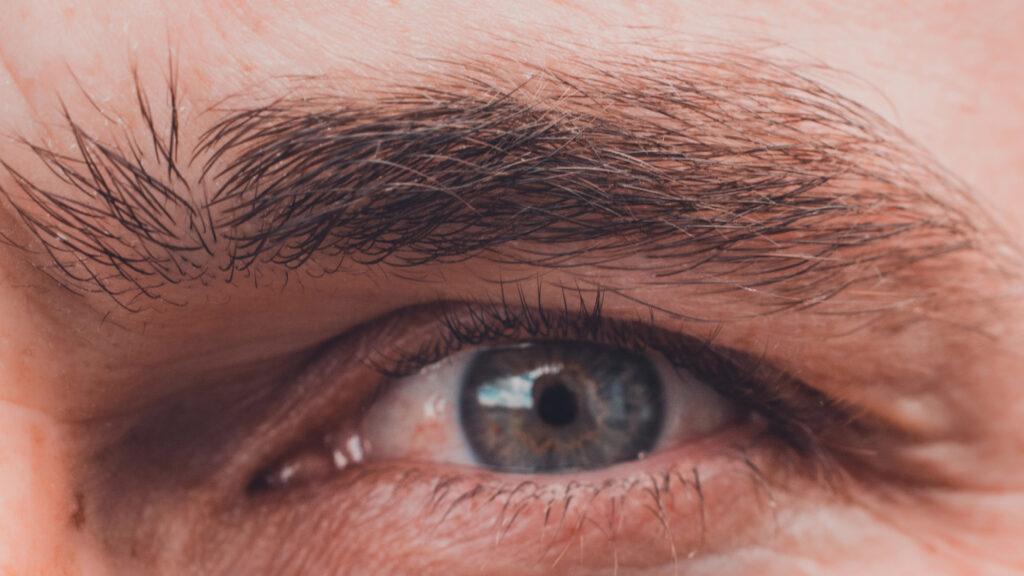
Turning 40 is a milestone, and along with it come some natural changes in our vision. While most people may only notice small shifts at first, certain eye conditions become more common after 40, potentially impacting everyday activities and overall quality of life. Keeping up with regular eye exams and knowing what to watch for can make a big difference in catching these issues early and managing them effectively. An eye doctor can provide tailored advice to help protect your vision as you age. Early detection and proper care are essential to maintaining healthy vision and independence. In this article, we’ll explore five common eye conditions to look out for after 40, from presbyopia to dry eye syndrome, along with tips on how to manage them and keep your eyes in top shape. Presbyopia: The Need for Reading Glasses One of the first signs of aging eyes is presbyopia, a condition where the eye gradually loses the ability to focus on close objects. This happens as the lens inside the eye becomes less flexible, making it harder to switch focus between near and distant objects. Typically starting in the early 40s, presbyopia often results in the need for reading glasses or multifocal lenses. Signs of presbyopia include: Holding Reading Material at Arm’s Length: A common habit people develop to see text more clearly. Difficulty Reading Small Prints: Small text on phones, menus, or books may become challenging to read. Eye Strain and Headaches: Frequent squinting or struggling to focus can lead to discomfort. While presbyopia is a natural part of aging, an eye doctor can recommend the best solution, such as reading glasses, contact lenses, or multifocals, tailored to your lifestyle. Regular eye exams can also help ensure your prescription is up-to-date and assess any changes in your vision. Cataracts: Clouding of the Lens Cataracts are another common age-related eye condition that typically appears after 40, though they become more prevalent in later years. A cataract occurs when the lens of the eye becomes cloudy, resulting in blurred or dim vision. This clouding happens gradually and can eventually interfere with daily activities like reading, driving, and recognizing faces. Signs of cataracts include: Blurry or Cloudy Vision: Objects may appear hazy or out of focus, even with glasses. Sensitivity to Light and Glare: Bright lights or sunlight may cause discomfort or halos around objects. Difficulty Seeing at Night: Low-light conditions, such as driving at night, may become more challenging. Fortunately, cataract surgery is a safe and effective solution for restoring clear vision, and it’s one of the most common procedures performed worldwide. If you notice any symptoms of cataracts, an eye doctor can assess your vision and discuss options for managing or removing cataracts when needed. Regular eye exams are key to monitoring cataract development and ensuring they don’t interfere with your quality of life. Glaucoma: The Silent Threat to Vision Known as the “silent thief of sight,” glaucoma is a group of eye diseases that damage the optic nerve, often due to increased pressure in the eye. Since glaucoma usually progresses without noticeable symptoms in its early stages, many people may not realize they have it until vision loss occurs. This makes regular eye exams crucial, especially for those over 40, as early detection can help slow or prevent vision loss. Signs of glaucoma include: Gradual Loss of Peripheral Vision: Often, side vision is affected first, making it harder to notice. Halos Around Lights: Bright lights may appear to have rings or halos, especially at night. Eye Pain or Redness: In some cases, particularly with angle-closure glaucoma, pain or eye redness may be present. An eye doctor can measure eye pressure and examine the optic nerve to detect early signs of glaucoma. If glaucoma is detected, there are various treatment options available, including medications, laser therapy, and surgery. Early diagnosis and treatment are essential, as vision lost to glaucoma cannot be restored, making prevention and regular monitoring vital. Age-Related Macular Degeneration (AMD): Central Vision Loss Age-related macular degeneration (AMD) is a common eye condition that affects the macula, the central part of the retina responsible for sharp, detailed vision. AMD is one of the leading causes of vision loss in people over 40, particularly impacting activities that rely on central vision, such as reading, driving, and recognizing faces. There are two types of AMD: dry (more common) and wet (less common but more severe). Signs of AMD include: Blurred or Distorted Central Vision: Straight lines may appear wavy, and objects may look blurry. Difficulty Recognizing Faces: The center of your field of vision may be affected, making it challenging to see faces clearly. Dark or Empty Spots: A dark or blank area may appear in the center of your vision. While there is no cure for AMD, early detection through regular visits to an eye doctor can slow its progression, particularly in the case of wet AMD, which may be treated with injections, laser therapy, or lifestyle adjustments. For those with dry AMD, dietary changes and vision aids can help manage symptoms and maintain quality of life. Dry Eye Syndrome: Discomfort and Irritation Dry eye syndrome is a common condition that often becomes more prevalent after 40, especially as natural tear production decreases with age. Hormonal changes, certain medications, and prolonged screen time can contribute to dry eyes, leading to discomfort and irritation that can interfere with daily activities. Signs of dry eye syndrome include: Stinging or Burning Sensation: A frequent feeling of dryness or burning in the eyes. Redness and Irritation: The eyes may appear red, particularly after reading or using digital devices. Sensitivity to Light: Bright lights may feel harsh and uncomfortable. Blurred Vision: Vision may temporarily blur, especially after focusing for long periods. Managing dry eye syndrome often involves lifestyle adjustments, such as reducing screen time and using a humidifier, as well as treatments like artificial tears or prescription eye drops. An eye doctor can help identify the underlying cause and recommend the best treatment options
Cataracts: Signs, Symptoms, and Treatment at The Eye Pros
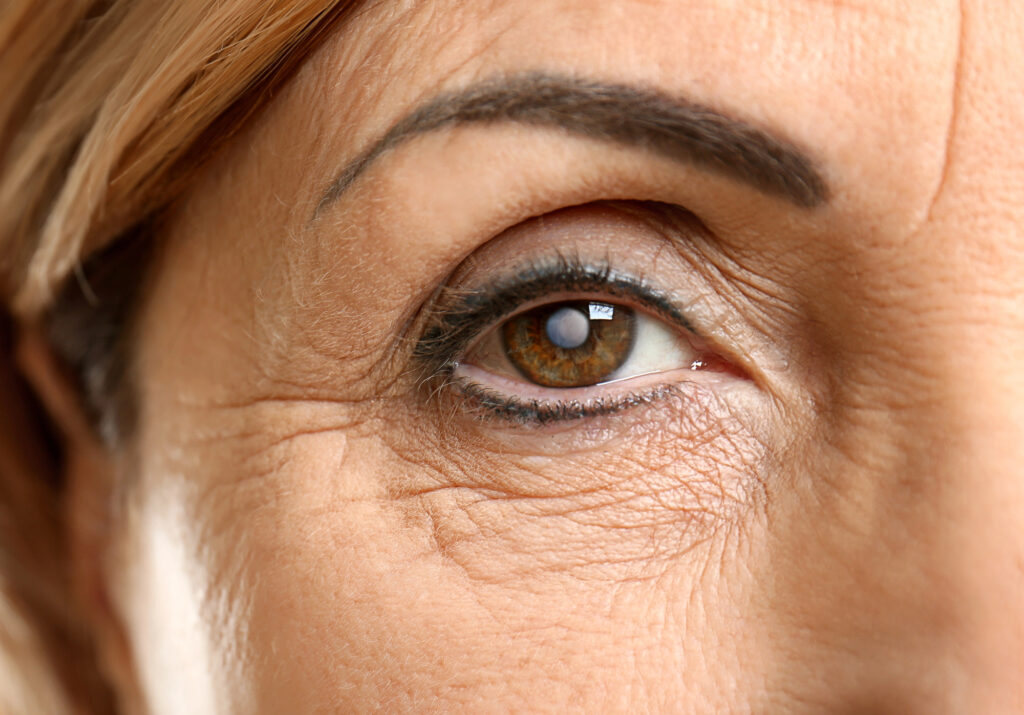
https://vimeo.com/989397662?share=copy Have you noticed your vision becoming cloudy or blurred lately? This could be a sign of cataracts, a common eye condition that Dr. Robison at The Eye Pros in Boise, Idaho sees frequently. In this video, Dr. Robison explains what cataracts are, the symptoms to watch for, and the treatment options available. Cataracts occur when the lens of the eye, which normally focuses light, becomes cloudy. This can make it difficult to see clearly, especially in low light or when looking at bright lights. Hi, I’m Dr. Robison with The Eye Pros in Boise, Idaho. I just wanted to talk to you guys a little bit about something we commonly see every day: cataracts. Cataracts are just a clouding of the lens. They get harder and more densely cloudy. It’s like looking through a foggy or dirty window, especially at night. Bright lights will be terrible. And so, if you’re seeing any of these kinds of symptoms, come in and see us at The Eye Pros. Dr. Chris Robison Tweet I have been using Eyemart Express for several years. I have eye appointments every 6 months and have also purchased glasses there as well. It is a one stop place to get everything done if you have any eye issues. I am very happy with Dr. Thompson as well as he stays on top of any issues I may have going on. Thanks everybody. Linda Briggs Several great doctors and amazing prices on exams and contact lenses. Having EyeMart next door makes it easy to get a prescription and get glasses the same day. Ethan Johnson I have been a patient here for many years and Dr. Bloom has always taken great care of me. He is thorough, professional, and kind! Emma Carter Previous Next If you’re experiencing any of the symptoms Dr. Robison mentioned, such as blurry vision, difficulty seeing at night, or sensitivity to bright lights, it’s important to schedule an appointment with an eye doctor. Early detection and treatment of cataracts can help you maintain good vision and avoid complications. At The Eye Pros, Dr. Robison can diagnose cataracts and recommend the best course of treatment, which may include monitoring your condition, using eyeglasses or contact lenses, or eventually, cataract surgery. Restore the comfort and clarity of your vision. Call Boise Eye Pros at (208) 378-7020 or schedule your appointment today. We look forward to helping you achieve optimal eye health! Book Now Call Us
Blurry Vision? Learn How Astigmatism Treatment Can Help You See Clearly

Are you experiencing blurry vision, both near and far? Do straight lines sometimes appear doubled? These could be signs of astigmatism. In this video, Dr. Eric Thompson, one of the co-owners and ophthalmologists at Eye Pros, will explain what astigmatism is and how it affects your vision. Dr. Thompson will also discuss how a simple eye exam can diagnose astigmatism and how corrective lenses, like glasses or contacts, can help you see clearly again. Hello everyone. I’m Dr. Thompson. Over at Eye Pros, one of our seven doctors and one of our co-owners, we explain astigmatism. Astigmatism is a fancy medical term for an irregularly shaped eye or an irregular curve of the eye. When a picture or a letter enters your eye, it often doubles into two different images. So, during your eye examination, we’re able to measure those two different images and correct it with a pair of glasses or a pair of contacts. People with astigmatism tend to have blurry vision, both far away and up close, on their computer or on their phone. It is something we can definitely take care of and help you see better through an eye examination. Dr. Eric Thompson Tweet I have been using Eyemart Express for several years. I have eye appointments every 6 months and have also purchased glasses there as well. It is a one stop place to get everything done if you have any eye issues. I am very happy with Dr. Thompson as well as he stays on top of any issues I may have going on. Thanks everybody. Linda Briggs Several great doctors and amazing prices on exams and contact lenses. Having EyeMart next door makes it easy to get a prescription and get glasses the same day. Ethan Johnson I have been a patient here for many years and Dr. Bloom has always taken great care of me. He is thorough, professional, and kind! Emma Carter Previous Next As Dr. Thompson explained, astigmatism is a common eye condition that can cause blurred vision at all distances. The good news is that astigmatism is easily treatable with eyeglasses or contact lenses fitted after a comprehensive eye exam. If you’re experiencing any vision problems, schedule an appointment with Dr. Thompson or one of the other qualified ophthalmologists at Eye Pros. They can help you achieve clear and comfortable vision. Restore the comfort and clarity of your vision. Call Boise Eye Pros at (208) 378-7020 or schedule your appointment today. We look forward to helping you achieve optimal eye health! Book Now Call Us
Dry Eye Relief: Effective Treatment for Meibomian Gland Dysfunction at Boise Eye Pros
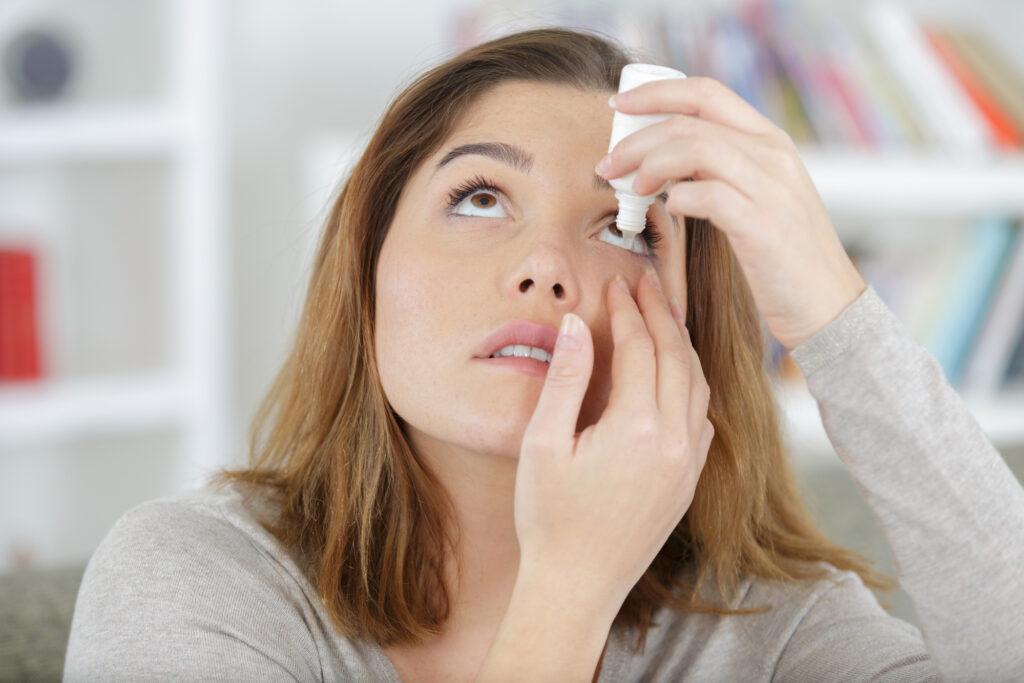
https://vimeo.com/988200040?share=copy This transcript is from an informational video by Dr. Robison of Boise Eye Pros about a condition called meibomian gland dysfunction (MGD). MGD occurs when the glands in your eyelids that produce oil for your tears become inflamed and clogged. This can lead to dry, gritty eyes because the oil layer of your tears evaporates too quickly. Dr. Robison discusses how Boise Eye Pros uses IPL technology to treat MGD by targeting inflammation and clearing blockages in the glands. Hi, I’m Dr. Robison with the Boise Eye Pros. Are you experiencing any dry or gritty eye symptoms? Chances are you might have meibomian gland dysfunction. Our tears are made up of three layers: there’s a sugar layer made by our eye, there’s a watery layer made by a gland in our sinuses, and there’s an oil layer made by glands in our eyelids called meibomian glands. If those meibomian glands get inflamed and clogged up, then we don’t spread oil over the tears, and our tears will evaporate quickly. At our Boise office, we have advanced technology to treat meibomian gland dysfunction. Our IPL device delivers intense pulses of light that target the blood vessels leading to eyelid inflammation, as well as melts down the oil that’s been hardened up in our eyelids, clearing a new path for our oil to spread over our tears, making it so our tears don’t evaporate so quickly. Here at the Eye Pros, our doctors work hard to find the root cause of your dry eyes, rather than throwing a bandaid over the symptoms such as with constant artificial tear use. So, if you or someone you know has been experiencing dry eye symptoms, our office has the most effective treatment options available. Dr. Chris Robison Tweet I have been using Eyemart Express for several years. I have eye appointments every 6 months and have also purchased glasses there as well. It is a one stop place to get everything done if you have any eye issues. I am very happy with Dr. Thompson as well as he stays on top of any issues I may have going on. Thanks everybody. Linda Briggs Several great doctors and amazing prices on exams and contact lenses. Having EyeMart next door makes it easy to get a prescription and get glasses the same day. Ethan Johnson I have been a patient here for many years and Dr. Bloom has always taken great care of me. He is thorough, professional, and kind! Emma Carter Previous Next Don’t let dry eyes disrupt your daily life! Schedule an appointment at Boise Eye Pros today. Our friendly staff will listen to your concerns and perform a comprehensive eye exam to diagnose the root cause of your dry eyes. We offer a variety of treatment options tailored to your specific needs, and our IPL technology provides a safe and effective solution for meibomian gland dysfunction. Restore the comfort and clarity of your vision. Call Boise Eye Pros at (208) 378-7020 or schedule your appointment today. We look forward to helping you achieve optimal eye health! Book Now Call Us
Signs and Symptoms That You Require an Eye Exam in Boise
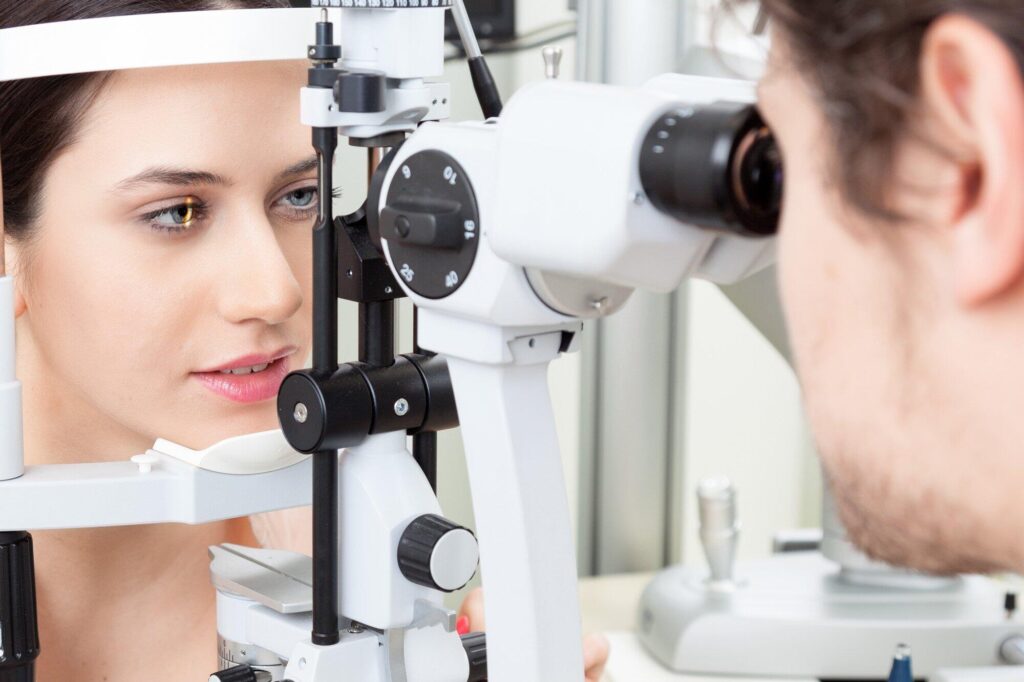
Over 12 million Americans aged 40+ suffer from vision impairment. Vision impairment can hugely impact your independence and quality of life. If you live in Boise, maintaining optimal eye health is essential for a vibrant and active lifestyle. One of the fundamental steps in protecting your vision is regular eye exams. These exams often uncover underlying eye conditions that may otherwise go unnoticed. Recognizing the signs and symptoms that you need an eye exam can help you take proactive steps towards preserving your vision. Below are indicators that should prompt you to schedule your next eye exam in Boise. The Importance of Eye Exams in Boise Eye exams are not just about getting a new prescription for glasses or contacts. They play a vital role in maintaining your eye health. Let’s delve into why eye exams in Boise are good for you. Detect Vision Problems Early Regular eye exams are essential in catching vision problems like glaucoma, especially since many eye conditions progress without any obvious symptoms. By scheduling routine checkups, you can identify issues such as vision impairment causes at an early stage, preventing complications that might affect your long-term eye health. Early detection gives you the advantage of starting treatment before the condition worsens, safeguarding your vision for the future. Monitor Eye Health If you have systemic health concerns like diabetes, it’s essential to prioritize monitoring your eye health. For instance, diabetes can lead to diabetic retinopathy, a condition that can cause significant vision issues if not caught early. By scheduling routine eye exams, you can detect potential complications before they escalate, ensuring you maintain your optimal eye health and prevent long-term damage. Regular checkups allow for early intervention, which is key to protecting your vision and overall health. Update Prescriptions for Visual Clarity Your eyes change over time. As a result, having an outdated prescription can lead to eye strain and even worsened vision. If you rely on corrective lenses, regular eye exams are essential for updating prescriptions. This will allow you to see the world clearly and comfortably. Access Specialized Care and Treatment Each person’s eye health needs are unique, and regular eye exams allow optometrists in Boise to develop tailored treatment plans that address your specific vision concerns. These personalized plans ensure that you receive the specialized care and treatment necessary to maintain optimal eye health and prevent future complications. Whether you’re managing glaucoma, diabetic retinopathy, or simply need corrective lenses, individualized care is key to achieving the best possible outcomes. Signs and Symptoms That You Need an Eye Exam in Boise Eye problems can often be corrected if detected early. If you’re experiencing any of the following signs and symptoms, it may be time to book an eye exam in Boise. Regular exams are essential for maintaining optimal vision health and addressing issues before they progress. You Have Red or Itchy Eyes One of the most common signs that you need an eye exam is red or itchy eyes. While occasional redness or itchiness may be due to allergies or fatigue, persistent symptoms could indicate an underlying condition such as dry eye syndrome or conjunctivitis (pink eye). These symptoms can be uncomfortable, but with a proper diagnosis, conditions like dry eyes can be managed effectively through targeted dry eye relief and care. These symptoms can be linked to dry eye syndrome or pink eye. Luckily, you can manage these conditions with a proper diagnosis and treatment. You Have Watery Eyes Boise’s climate is often dry. As a result, environmental factors like wind and dust can cause you to experience increased tear production as a protective mechanism. However, persistent watery eyes warrant an eye exam in Boise. It may be a sign of eye conditions such as blocked tear ducts or conjunctivitis. Going for an eye exam can help you identify the root cause of watery eyes and determine the appropriate treatment. You Experience Eye Turning Also known as strabismus, eye turning is a condition where the eyes do not align properly. You may notice that one or both eyes turn inward, outward, upward, or downward. This can lead to double vision. Having strabismus may affect your depth perception. If left untreated, it may also result in vision problems or amblyopia (lazy eye). An eye exam can help you diagnose strabismus early and implement suitable interventions. You Experience Excessive Blinking or Eye-Rubbing With the prevalence of digital devices, screen time has become prevalent. If you spend prolonged hours on digital screens, you may experience frequent blinking or rubbing of the eyes. It may be a sign of eye fatigue or strain. These habits may signal the need for a comprehensive eye exam to assess your visual health. Your eye doctor in Boise can recommend strategies to reduce eye strain for optimal comfort. You Have to Deal With Squinting or Covering One Eye Squinting or covering one eye while focusing on objects can be a sign of refractive errors such as nearsightedness or astigmatism. These behaviors may be common among children as they struggle to see clearly. An eye exam in Boise can accurately diagnose these conditions and provide tailored solutions. You Have Frustration With Learning and a Short Attention Span In children, frustration with learning or a short attention span may be due to undiagnosed vision problems. Issues like amblyopia (lazy eye) can affect your child’s ability to concentrate and learn well. Scheduling a comprehensive eye exam in Boise for your child can help identify any vision issues early. This helps ensure they get optimal pediatric eye care. You Experience Light Sensitivity Light sensitivity or photophobia can be signs of underlying vision problems. These symptoms may indicate conditions like: These issues can impact your visual comfort and clarity. An eye exam in Boise can help you pinpoint the cause of these issues and get recommendations on suitable corrective measures. You Have Eye Pain Eye pain can stem from various sources, including injuries or underlying conditions such as uveitis. Prompt evaluation through an eye exam
Healthy Eyes, Happy Life: Regular Eye Exams with Idaho Falls Optometrist
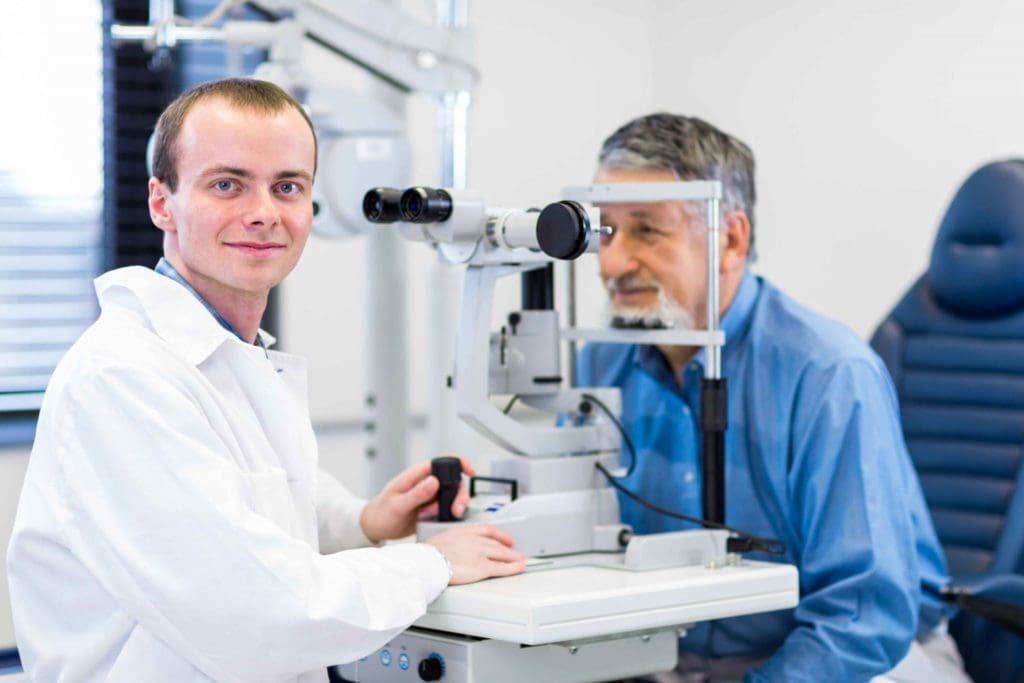
As you look around the gorgeous Idaho Falls area, it’s easy to appreciate how valuable your eyes are. But how can you make sure they stay healthy and effective, allowing you to appreciate the splendor of Idaho for years to come? The answer is regular eye exams! Today we’re talking about finding an Idaho Falls optometrist and shedding a light on why prioritizing your eye health is a necessity for a happy, fulfilled life. Understanding Eye Health When we talk about eye health, it’s like discussing the health of a complex, finely-tuned camera. Our eyes work in a similar way, capturing light and turning it into images that our brain can understand. This process lets us see the beauty in our surroundings, recognize faces, and navigate our world. The eye is made up of several parts, each playing a crucial role in vision. The cornea is the eye’s front window, helping to focus incoming light. The lens sits behind the cornea, fine-tuning focus, much like the lens of a camera. At the back of the eye is the retina, a layer of cells that senses light and sends signals to the brain. These parts work together seamlessly to provide us with vision. Issues With the Eye However, just like any complex system, things can go wrong. One common eye problem is nearsighted and farsighted, where distant or nearby objects appear blurry depending on the condition. Others are farsightedness, making it hard to see things up close, and astigmatism, causing overall blurry vision. More serious conditions like glaucoma, cataracts, and age-related macular degeneration can lead to significant vision loss if not addressed. Lifestyle choices can also impact our eye health. For example, spending a lot of time in front of screens can strain our eyes. Eating a diet low in essential nutrients can affect vision over time. Even exposure to too much sunlight without proper eye protection can be harmful. Taking care of our eyes doesn’t have to be complicated. Simple steps can make a big difference in maintaining eye health. For starters, it’s vital to protect our eyes from the sun. It’s also about eating a balanced diet rich in fruits and vegetables, and managing screen time. The Significance of Regular Eye Exams When you visit an eye doctor, they do more than just check how well you can see. They perform a comprehensive examination that looks at all aspects of your eye health. This includes tests to measure your vision sharpness and check for common eye problems. The eye doctor also examines the inside and outside of your eye for signs of any diseases. These exams are crucial because many eye diseases do not show symptoms in their early stages. Catching eye diseases early can often lead to better outcomes. Diseases like glaucoma, for example, can cause blindness if not treated. However, if detected early during a routine eye exam, steps can be taken to manage the disease and protect your vision. This is why regular eye exams are so important. They can find problems before they cause significant damage or lead to vision loss. For those who wear glasses or contacts, an up-to-date prescription is essential for clear vision. It’s also about ensuring your eyes are healthy. Over time, your vision can change. Regular eye exams ensure that your prescription matches your current vision needs. This not only helps you see better but also reduces the strain on your eyes, which can prevent future problems. Idaho Falls Eye Care When it comes to eye care, finding the right local optometrist is a crucial step. An optometrist is not just a doctor for your eyes; they are your partner in maintaining your vision health. They help you navigate through changes in your vision, provide solutions for eye health issues, and guide you in preventing future problems. When selecting an Idaho Falls eye doctor or optometrist, consider their qualifications, experience, and the feedback from their patients. A good optometrist will make you feel comfortable, listened to, and confident in the care you are receiving. Idaho Falls is home to a wide range of eye care services tailored to meet the needs of its community. From comprehensive eye exams that assess everything from your vision sharpness to potential eye diseases, to specialized services like pediatric eye care, contact lens fittings, and treatments for specific conditions such as glaucoma or diabetic retinopathy. The goal is to provide a one-stop solution for all your eye care needs, ensuring you and your family maintain optimal eye health. Accessibility to quality eye care is essential for the community’s well-being. Idaho Falls values this principle, offering various options to ensure everyone has access to the eye care they need. This might include community programs that offer eye care services at reduced rates or free eye exams for individuals who qualify. These efforts ensure that economic factors do not prevent anyone from receiving necessary eye care. Remember, regular visits to your optometrist play a significant role in not just maintaining your vision but also in your overall quality of life. By investing in your eye health, you are setting the foundation for a clearer, brighter future. Preventative Measures for Healthy Eyes Protecting our eyes is crucial for maintaining good vision throughout our lives. One effective way to safeguard our eyes is by wearing protective eyewear. Whether you’re playing sports, working with tools, or spending time outdoors, the right glasses can shield your eyes from injury and harmful UV rays. It’s not just about safety; it’s about ensuring your eyes are protected against the elements that can cause long-term damage. Nutrition also plays a vital role in eye health. Eating a diet rich in fruits, vegetables, and omega-3 fatty acids can help protect your eyes from age-related issues and keep them functioning well. Nutrients like vitamin C, vitamin E, zinc, and lutein have been linked to a lower risk of major eye conditions. Think of food as fuel for your eyes – the better the quality, the better your
How to Find the Best Twin Falls, Idaho Optometrists
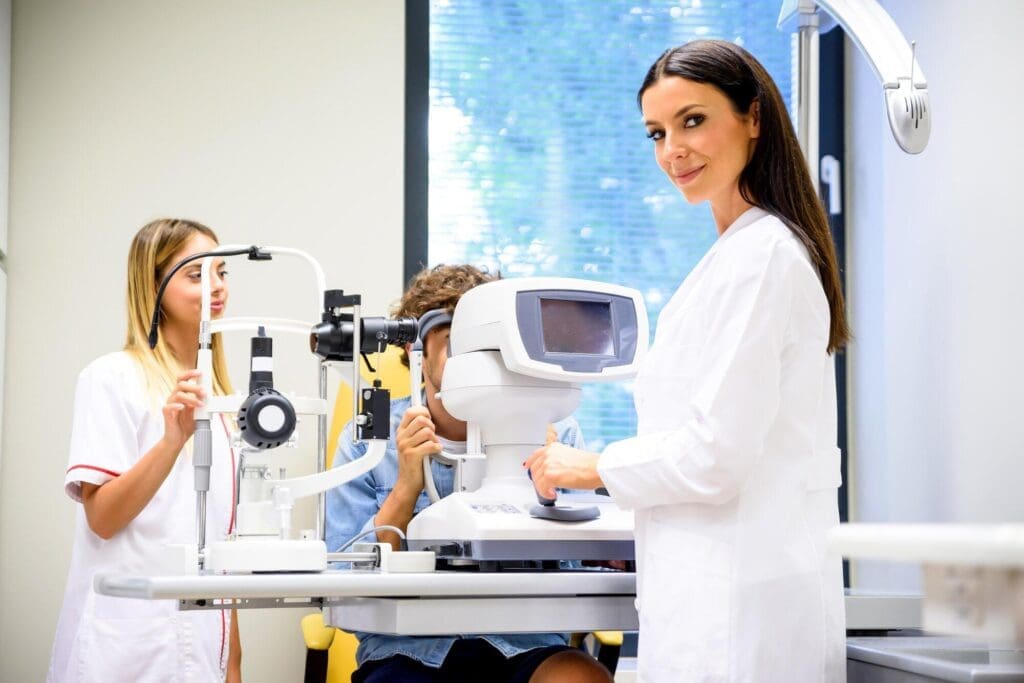
Searching for Twin Falls, Idaho optometrists may be a bit challenging, but it doesn’t have to be. Finding the right local optometrist can make all the difference in maintaining your eye health, and subsequently, your quality of life. Our eyes are the windows to the world, so entrusting their health to a skilled professional is vital. This article is your compass. We’ll guide you through the landscape of eye care in Twin Falls, revealing the best optometrist that the Gem State has to offer. Discover how to discern between mediocre and exceptional eye care, because your sight is too important to settle for less! Read on to learn more. What Is an Optometrist? Before we discuss the process of finding the best optometrist in Twin Falls, it’s important to understand the role of an optometrist. An optometrist is a healthcare professional who specializes in the examination, diagnosis, and treatment of eye and vision problems. They are licensed to prescribe medications, correct refractive errors with glasses or contact lenses, and provide pre- and post-operative care for eye surgeries. Optometrists are trained to detect a wide range of eye conditions, including glaucoma, cataracts, and macular degeneration. They also play a vital role in identifying systemic health issues that may manifest in the eyes. Why Routine Eye Exams Are Essential Regular eye exams are essential for maintaining good eye health. They can help identify initial signs of eye conditions and prevent potential vision loss. Here are a few reasons why scheduling a comprehensive eye exam with a local optometrist is necessary: Early Detection of Eye Conditions The majority of eye conditions develop slowly and are often asymptomatic in their early stages. Routine eye exams can detect these conditions at an early stage. This increases the chances of successful treatment and prevents further deterioration of vision. Updating Prescription Glasses or Contact Lenses If you wear glasses, regular eye exams are necessary for verifying that your prescription is up-to-date. Your vision may alter as time goes on. Therefore, an optometrist can adjust your prescription accordingly, allowing you to see as clearly as possible. Overall Eye Health Assessment Eye exams test your visual acuity, but also examine the entirety of your eye health. Optometrists can detect signs of eye diseases, infections, or abnormalities that might not have any obvious symptoms. Early intervention is vital in managing these conditions effectively. Tips for Finding Local Optometrists Finding Twin Falls, Idaho optometrists becomes easier if you utilize various resources. Start by asking for recommendations from friends, family, or colleagues who live in the area. Personal recommendations can provide valuable insights into the quality of care provided by specific optometrists. You can also use online directories or search engines to find a list of local eye doctors in Twin Falls. Many websites provide comprehensive information about the optometrist’s qualifications, services, and patient reviews. Make a list of potential optometrists and narrow down your options based on other factors such as location, office hours, or accepted insurance plans. Questions To Ask When Selecting an Eye Doctor Once you have a shortlist of potential Twin Falls, Idaho optometrists, it’s a good idea to ask them a series of questions to further evaluate their suitability for your needs. A few important questions to ask include: What Is Your Educational Background and Experience? This is a vital question to ask because it’ll help you gauge the eye doctor’s credentials. By knowing their educational background, you can feel confident that you’re getting your eyes examined by someone with adequate education. Knowing this information will put you at ease. Plus, if the optometrist has several years of experience, chances are, they’ll know exactly how to properly perform an eye exam. Are You Licensed and Board-Certified? This question ties into the previous one, but it takes a step further. Ask the optometrist if they are certified through the American Board of Optometry. If they are, that’s a great indicator that they are well-equipped to manage your eye health. What Insurance Plans Do You Accept? Inquire about the accepted insurance plans to verify that you can access their services without financial constraints. This question will likely determine whether you continue to see them. What Are Your Office Hours and Availability for Appointments? It’s important to ask about the optometrist’s availability and office hours. Make sure that their schedule aligns with yours and that it’s convenient for you to make appointments. Do You Have Expertise in Treating My Specific Eye Condition? Choosing an eye doctor isn’t just about finding someone who can give you an eye exam. You also want to find an optometrist that understands your particular eye condition. That way, they’ll be better suited to answer your questions and give you proper treatment. What Is Your Approach to Patient Care and Communication? This question is also vital. The way your eye doctor communicates with you and provides care will impact your overall experience. Make sure that they can offer the type of service that will make you feel comfortable. What Is the Average Wait Time for Appointments? When you go to an eye doctor, of course, you should expect to wait. However, you may be able to adjust your schedule to bypass busy days. If your time is limited, this is a good question to ask. But don’t let long waits be a deterrent. If you found a skilled optometrist, waiting a longer time is worth it. Can You Provide References From Other Patients? In addition to reading reviews, getting references from the optometrist is a good idea. Doing so will give you firsthand testimonials from other patients. This is a great way to put your mind at ease, especially when you’re seeing an optometrist for the first time. What to Expect During an Eye Exam When visiting an optometrist for an eye exam, it’s imperative to know what to expect. The eye exam typically begins with a comprehensive medical history review, followed by various tests to assess your vision and eye health. These tests may include
How to Find the Best Eye Doctor in Boise
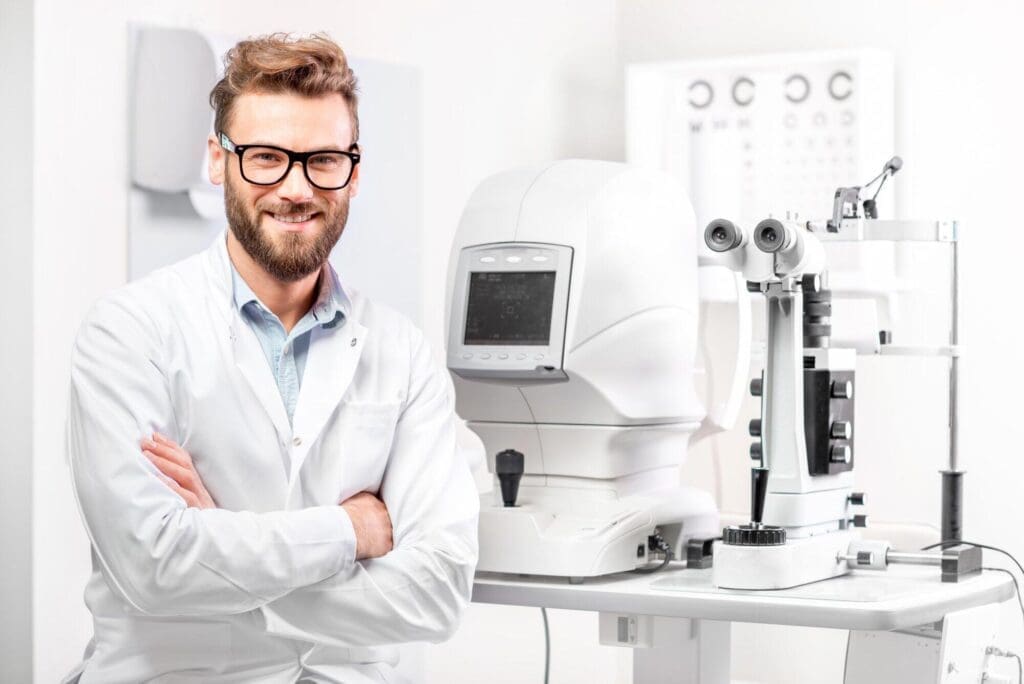
Nearly 2.2 billion people experience vision impairment globally. Having vision problems can affect your quality of life. You’re more likely to experience restrictions in your mobility and independence. What’s more, it increases your risk of falls, injuries, and poor mental health. Luckily, you can still maintain your clear vision and prevent potential eye issues. But first, you have to find the best eye doctor in Boise. With qualified experts, you can receive the most accurate and up-to-date eye care services. If you need help selecting a reliable eye doctor, below is a guide to help you. Start With Local Optometrists To find the best eye doctor in Boise, begin your search with local optometrists. Local professionals are often more accessible, making it easier to schedule regular eye exams. To find a local optometrist in Boise, you can: This way you can find an eye dentist with a deeper understanding of your community’s unique eye health needs. As a result, you can get more attentive and tailored care. Check the Eye Doctor’s Education and Credentials When looking for an eye doctor in Boise, ensure you check their education and credentials. Doctors with reputable education and credentials are likely to provide a higher quality of care. To assess their qualifications, start by researching optometry programs in Idaho. Ensure that these programs are accredited by the Accreditation Council on Optometric Education. If your optometrist has received education from this program, they may meet specific standards of quality. Additionally, find out if the eye doctor has taken the NBEO certification exam. It assures you that the optometrist possesses the necessary knowledge and skills to provide quality eye care. Look at the Eye Doctor’s Licensure Unlicensed eye doctors often don’t have the necessary training or expertise to provide safe and effective care. This can cause harm to your eye health. For your safety, ensure that your eye doctor is licensed to practice optometry in Idaho. To do this, check with the Idaho Board of Optometry. This licensure shows that the doctor meets the state’s requirements for training and competency. Review the Eye Doctor’s Specialization Different eye doctors specialize in different areas of treatment. This is why you need to consider the eye doctor’s specialization. Here are some common specializations and their focus areas: Ophthalmologists If you are suffering from specific eye conditions and need eye surgery, ophthalmologists can help you. Common eye conditions and diseases that they treat include: Ophthalmologists have at least eight years of additional medical training. This includes a one-year internship and a three-year residency. Optometrists Optometrists are primary eye care specialists. They offer comprehensive vision care, including regular eye exams, contact lens fitting, and refractive eye care. Pediatric Eye Specialists Pediatric eye specialists specialize in providing medical and surgical eye care for children under the age of 18. They offer treatment in a way that makes kids feel comfortable. Strabismus Specialists If you’re an adult with eyes that do not work properly together, opt for a strabismus specialist. They provide comprehensive diagnosis and management for eye motility disorders. Oculoplastic Surgeons These surgeons repair damage to or problems with the eyelids. They can also treat cosmetic issues dealing with tissues around the eyes. These include eyebrow lifts and blepharoptosis repairs. Retina Specialists Retina specialists diagnose and manage retinal diseases, including macular degeneration. They surgically repair torn and detached retinas. Also, they can treat problems with the vitreous-the gel-like substance in the middle of the eyeball. To find the right eye doctor, assess your eye issues. This will help you choose an eye doctor who specializes in your specific needs. Evaluate Years of Experience Experience matters when it comes to eye care. Look for an eye doctor who has several years of experience in the field of optometry. With more experience, eye doctors become better at diagnosing and managing various eye conditions. Also, experienced eye doctors are more likely aware of the latest treatments and technologies. These include microinvasive glaucoma surgery and advanced intraocular lenses. With advancements in eye technology, you can get better patient outcomes. As eye doctors gain experience, they develop better patient care skills. This allows you to access more personalized eye care solutions. Check Out Patient Reviews One of the best ways to find the best eye doctor in Boise is through patient reviews. Reading these reviews will give insights on: Reviews help you make an informed decision about which eye doctor to choose. They also give you an idea of what to expect during your visit. You can get reviews on the eye clinic’s website. For more unbiased reviews, you can visit websites like Yelp, Google Reviews, and the Better Business Bureau (BBB). Look at the Eye Services Offered Eye doctors in Boise offer a comprehensive range of services to ensure optimal eye health. These services can help address any eye issues and enhance your vision. Some key offerings eye clinics offer include: Knowing the scope of services helps you gauge the convenience of choosing a particular eye doctor. It ensures that your routine check-ups and prescription needs can be well managed within the chosen practice. Check to Ensure the Price is Right Your ideal eye doctor should fall within your price range. There is no point in seeking eye services you can’t afford. Research the cost of eye exams, prescription glasses, and other services at different eye clinics. Look for discounts and special offers from eye doctors, such as mail-in rebates and loyalty rewards. Some doctors may also offer sliding scales or unique payment plans for patients without insurance. Consider the quality of service you will get when choosing an eye doctor. While it may be tempting to go for doctors with discounts, keep in mind that low prices may also mean low-quality treatment. It may be worth paying a premium for higher-quality eye services. Consider Your Insurance Cover When searching for an eye doctor, consider your insurance coverage. Contact your insurance company to find doctors in your area who are in their network. This can
